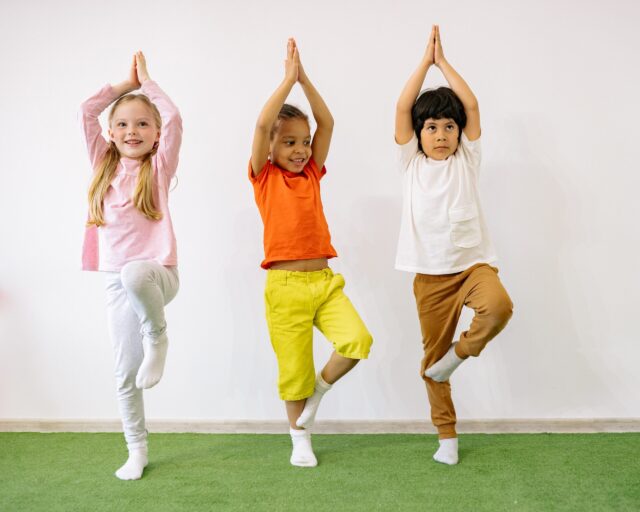It’s been a bit of a buzzword for the last couple decades, but it’s for good reason. Mindfulness has many applications and benefits.
Practicing mindfulness can be an enriching addition to your camp activity docket, and parents will likely appreciate the calmness and peace that it teaches kids and teens.
But how do you get started teaching such a big concept? Let’s start with the definition.
The definition of mindfulness
According to Mindful, the definition of “mindfulness is the basic human ability to be fully present, aware of where we are and what we’re doing, and not overly reactive or overwhelmed by what’s going on around us.”
When we are mindful, we aren’t caught up in worrying about the future or ruminating on the past. We are simply paying attention to our breath and the world around us.
In essence, mindfulness is a path toward inner peace.
Why mindfulness is important for kids and teens
Today’s kids and teens have trouble shutting down their minds. Stress is constantly present in homes and schools. Depression is more common. And anxiety has been steadily worsening among these age groups for years.
Mindfulness practices are often “prescribed” as treatments not only for everyday stress, but also for more serious mental health issues. Learning mindfulness techniques has been proven to help young people improve their focus, better regulate their emotions, and feel more optimistic about life. In schools, it can even improve classroom participation and respect among students.
Unfortunately, many schools leave mindfulness out of their curriculums entirely. This is where your camp comes in. Away from home and school, kids and teens are in the perfect headspace to reevaluate their negative feelings.
You want your campers to leave camp with life-long friendships and great memories, but taking home mindfulness can make an even longer-lasting impact on their happiness.
Cultivating mindfulness at camp
Introducing your campers to mindfulness is not as complicated as you may think. Here are four examples of simple activities they will love:
1. Guided breathing exercises
These can be as short as a few deep breaths before snack time or as long as a half-hour of meditation. It’s up to you to decide what your campers can handle.
When everyone has quieted down and closed their eyes, start leading some deep breaths and use your imagination to describe a calming scene. If you’re not sure where to begin, you can also look up a guided meditation video on YouTube.
When they open their eyes, remind them that they can come back to their breath at any time – especially when they feel big emotions like anger or frustration. This can help them regulate interactions with other campers on their own.
2. Scheduled quiet time
This is exactly what it sounds like: time on the schedule for simply breathing and being quiet.
Often, camp schedules are jam-packed with activities. This is great for having fun, but slowing down can help campers take a mindful moment and appreciate their environment even more.
This will also give sensitive, quiet kids time they may need to decompress. Plus, counselors can get a well-needed break from the noise.
3. Walking meditation in nature
This could also be called a “silent hike.” Lead campers on a walk through nature (or whatever space is available to you) and ask them to focus on their breathing instead of talking.
Encourage them to look around and notice their surroundings without pointing them out to anyone else. This is their time to be with nature and their own minds.
After the walk, break off into small groups and discuss what the campers noticed. Did they see more than they usually would? What sounds were they able to pick up?
When the activity is over, remind them that they don’t need to be on a hike to do a walking meditation. Whether they are in the woods or walking in circles in their bedroom, all they need to do is move and pay attention to their breathing.
4. Mindful mealtime
Mealtime is an excellent opportunity to introduce mindfulness. During a meal or over a snack time, encourage campers to do very little talking and just enjoy the sensations of eating.
You can even lead their thoughts by pointing out different flavors, textures, and other aspects of the meal. Ask them: Have you ever really just tasted your food before? Or were you just focused on talking to friends?
At the end, remind them how precious this time is and how lucky they are to sit and enjoy their food. Then allow them to talk about the food and their feelings in small groups.
Key mindfulness resources
Interested in learning more about mindfulness and its applications? Here are a few resources to get you started:
Peace in Every Step
This book by well-known Zen master Thich Nhat Hanh is an ideal guide for those just starting out with mindfulness. His advice, stories, and meditations show readers simple yet effective ways to apply mindfulness to their everyday lives.
Mindful
Mindful is a magazine and website dedicated to mindfulness resources. It has everything from blogs to guided meditations, as well as resources grouped by issues like anxiety or sleep. There’s even a section dedicated to kids.
Headspace Guide to Meditation
This Netflix series was created by the people behind the popular mindfulness app Headspace. There are eight episodes that explore different emotions and strategies.
Want more kid-oriented resources? Check out this extensive list of mindfulness books for kids.
About CampSite
CampSite’s comprehensive camp management software is relied on by camps of all kinds across the country. Our customizable platform, frequent product updates, and 5-star support team make us a trusted and necessary camp management tool.
Want to learn more?
Request a free personalized demo with one of our sales experts!
